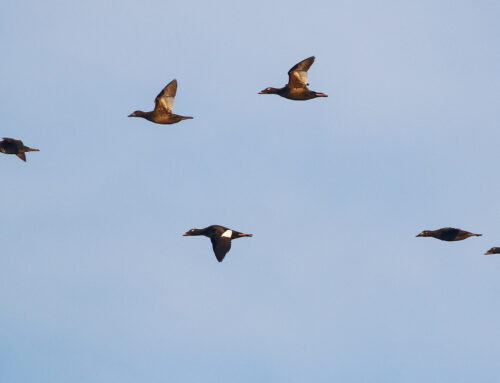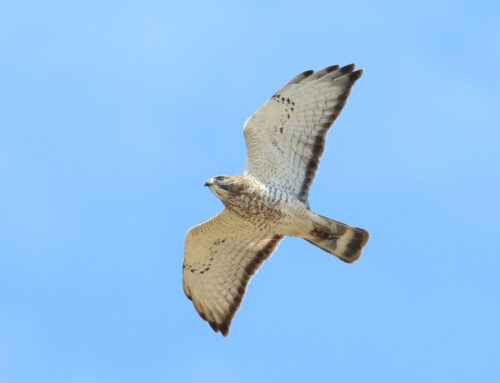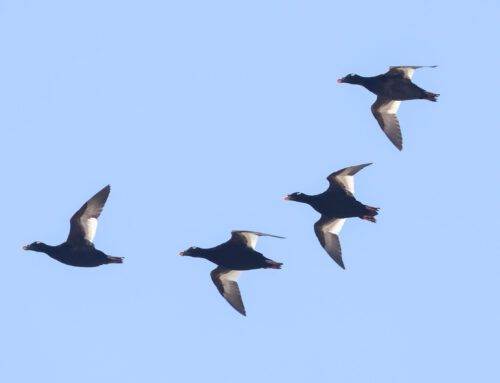…sailors take warning.” This saying tells us that under a red morning sky you can expect weather coming your way. Today couldn’t have been a better affirmation of this thousands of years old saying. A beautiful morning sky foretold the gale that came in the afternoon, shaking the waterbird shack and observers(read here for an explanation of the saying). As we talked about in the last post, we pay lots of attention to the weather and today looked interesting.

A beautiful and foreboding sunrise
The strong southerly winds ahead of the cold front pushed those birds brave enough to migrate closer to shore allowing us to pick out birds like Forester’s Tern alongside the Common Tern. In unsettled weather, birds often act atypically. For instance, in the heaviest winds and rain, several grebes (Horned and Red-necked) flew north and settled on waters near the point among the circling ducks. One of the most dramatic observations was a growing flock of Cliff Swallow attempting to fight the weather. Flock by flock these birds gathered at Whitefish Point, only to bank and shoot west when overcome by the force of the wind. The pattern was to push into the headwinds, tire, and retreat. This continued for over an hour and slowly the exhausted birds began taking rests on grasses and pines. The local Merlin were delighted by this spectacle and picked off a few tired swallows as the flock circled them. After the front passed the swallows were able to make their way south assisted by a strengthening westerly breeze.
With all this talk about migration and weather, you’d think we’d have migration all figured out. Well, the middle of this week really threw us for a loop. Tuesday and Wednesday we didn’t see weather that screamed migration to us, yet those two days saw huge movement and exciting species(63 and 54 species respectively). In those two days alone we saw over 1,400 Blue-winged Teal, almost 1,000 Red-necked Grebe, an exciting variety of songbirds, seven jaegers, and rarities such as Pie-billed Grebe, Great Egret, Dickcissel, and Lark Sparrow. On Tuesday, 1,453 Common Terns passed by while on Wednesday we were surprised to have none at all.
If there’s anything to know about Whitefish Point, it’s that the surprises never end. This is an amazingly dynamic place and day by day we discover its secrets.
Text and Photos by 2020 Fall Waterbird Counter Steve Backus






